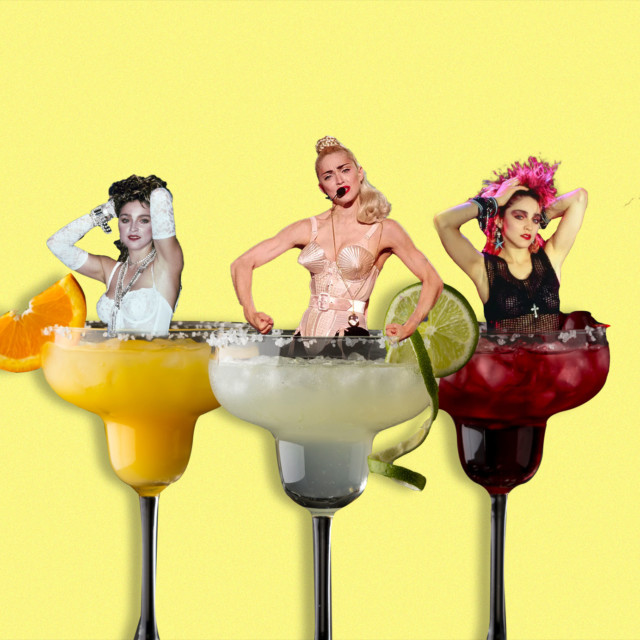Since the early ‘80s, pop diva Madonna has undergone constant transformations to remain relevant among fans as tastes and trends shift. Bouncing between white gowns to BDSM-inspired leather looks to hippie chic jumpsuits, the singer has been a pop culture mainstay for nearly 40 years and has along the way set the tone for the starlets who’ve entered the industry in the decades since the release of “Like a Virgin.”
It’s safe to say that the Margarita is the Madonna of cocktails.
Since Drinks International began releasing its annual list of the world’s most popular cocktails in 2015, the Marg has consistently ranked in the top 10. Unlike various tiki drinks and pre-Prohibition classics that have fallen in and out of public favor since their creation, the Margarita has cemented its role as a timeless sipper since its inception in the 1930s or ‘40s, though the drink’s exact origin is a bit hazy. But that’s not just because the drink’s simple specs make it oh-so-easy to make and sip; it’s also because — like the Queen of Pop — the Margarita has never been afraid of a refresh.
The spirit of the early 1970s championed innovation and experimentation: The Beatles had just discovered the synthesizer and were exploring psychedelic sounds on “Abbey Road,” while free-spirited youths took the streets in bell bottoms and shearling jackets, smoking cigarettes that smelled different from those of their parents. These were the days when the vibrant, eye-catching Tequila Sunrise had won over the hearts of the Rolling Stones and inspired a hit Eagles song. How could the stalwart, three-ingredient Marg ever hope to keep up? By adopting that same innovative energy, of course.
Bartenders quickly came to realize the cocktail’s poolside potential, and soon, the Frozen Margarita popped up on menus across the country. Critically, in ‘71, Dallas-based restaurant owner Mariano Martinez created the world’s first frozen Margarita machine, unsurprisingly catapulting them back to the top of the drinking charts.
The Frozen Marg became especially popular at Tex-Mex spots, but the ‘80s pushed the cocktail to once again evolve with the times. The “Material Girl” era was all about glitz and glam, spawning the advent of the over-the-top Cadillac Margarita; here, the drink’s specs remained the same, but this variation called for top-shelf tequila and Grand Marnier for a drink that was unmistakably “bougie” before the term existed.
Then came the ‘90s, when fashion trends went back to the basics and Oasis’s “Wonderwall” went Platinum (simpler times, indeed). To please the Walkman-wearing cool kids, the Tommy’s Margarita was born. This streamlined take on the Marg subs triple sec for agave for a slightly less sweet, highly balanced approach.
In the aughts, when the South Beach Diet was all the rage and many Americans frantically calculated their daily intakes to calorie-counting through apps and programs, the Margarita yet again responded to the times. Slimming down by subbing out triple sec for a fresh squeeze of OJ, the Skinny Marg was soon popularized by former “Real Housewives of New York” star Bethenny Frankel, whose low-cal Skinnygirl brand became a stunning success among reality TV fans and calorie-conscious drinkers alike.
But then, chaos reigned in the 2010s. Social media took over and simplicity went by the wayside; this was when Urban Outfitters began stocking mini bottles of Sriracha, and seemingly overnight, everything was chili-spiked. Luckily for the Marg, a splash of hot sauce or a jalapeño infusion beautifully complement tequila’s earthiness and are balanced by the drink’s innate sweetness. Thus, the Spicy Margarita was born, spawning countless variations on cocktail bar menus and taco joints alike.
Sure, the Marg has had its missteps along the way, with saccharine fruit flavors and syrups throwing off its balance, and RTD versions lacking depth. And like any celebrity, the Margarita is bound to have its fair share of haters. But its versatility and proven track record of shape-shifting mean the Queen of Tequila will continue to be remixed, remastered, and repopularized for decades to come.
